Many thanks go to Doug Banks and his team – the masters of colourisation. This invasion was the first military action of the Cold War. By July 1950, American troops had entered the war on South Korea’s behalf. As far as American officials were concerned, it was a war against the forces of international communism itself. After some early back-and-forth across the 38th parallel, the fighting stalled and casualties mounted with nothing to show for them. Meanwhile, American officials worked anxiously to fashion some sort of armistice with the North Koreans. The alternative, they feared, would be a wider war with Russia and China–or even, as some warned, World War III. Finally, in July 1953, the Korean War came to an end. In all, some 5 million soldiers and civilians lost their lives during the war. The Korean peninsula is still divided today.The beauty of these
The beauty of these colourised images is that colour, allows you to pick out and study the smallest detail. Do not click on their page – you will become addicted to their work It is the research that they do on each image that makes the captions themselves a history lesson. Facebook page here The Forgotten War in Color
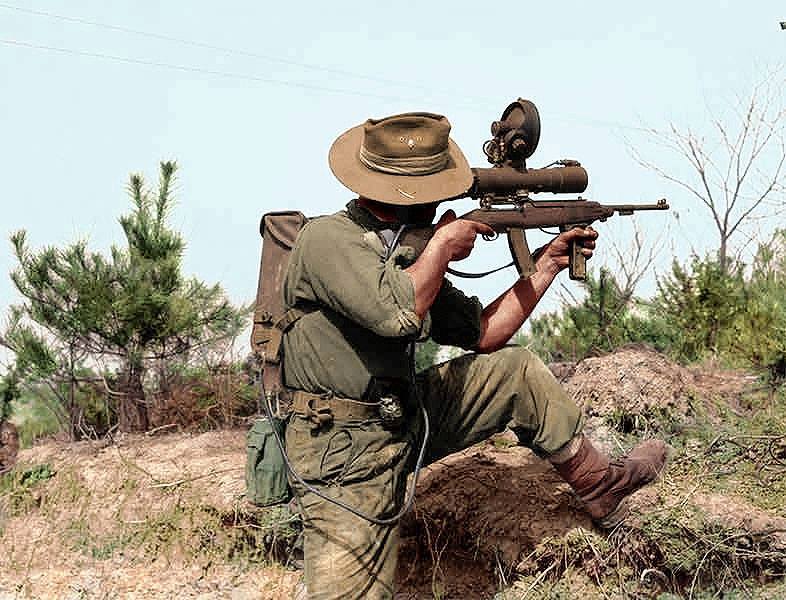
The soldiers of 3RAR were mostly Second World War veterans and all had volunteered for service in Korea. In October 1950 3RAR, operating as an integral battalion within the British Commonwealth 27th Brigade took part in the pursuit of the broken North Korean army after the Pusan breakout. Hard fighting followed as 3RAR along with all other UN forces contended with the Chinese intervention. In July 1951 the 1st Commonwealth Division was formed to which the Australian Army contributed two infantry battalions as part of the 27th Brigade which was later redesignated the 28th Brigade. The Korean War was above all an infantryman’s war which the Australian battalions, composed as they were of veteran soldiers, engaged in with consistent competence. Even though Australians were offered few opportunities for higher operational command the Australian Army did provide the most senior leadership positions of the British Commonwealth forces in Korea with Lt. General Sir Horace Robertson being the first of four Australian Lt. Generals to fill that role. During the three years of the Korean War the Australian Army deployed 10,657 soldiers. Of these 276 were killed in action, 16 died from other causes, 1210 were wounded in action and 23 became prisoners of war. One died while a prisoner. (korean-war.commemoration.gov.au)
(Source – Australian War Memorial 147849)
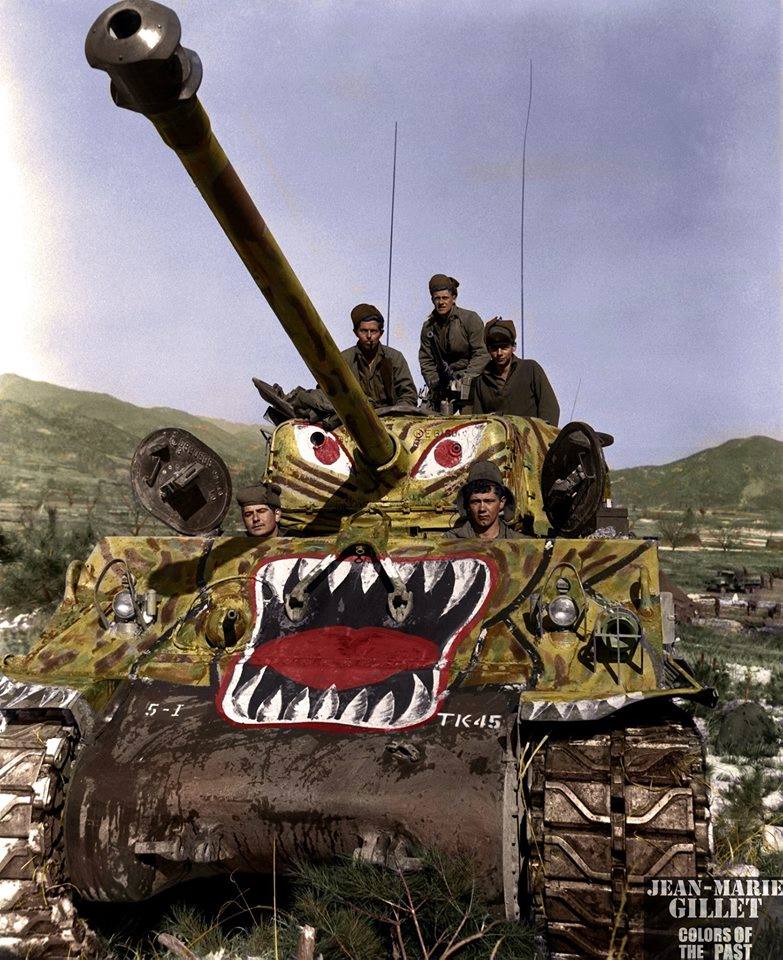
February 18th 1951. #Koreanwar #Shermantank
Left to Right: Cpl John T. Clark (Union, SC); Cpl James E. Kishbaugh (Nescopeck, PA); Sgt Frank C. Allen (Etiwanda, CA); Sgt Theodore R. Liberty (Bushton, MA); and Cpl William J. Bohmback (Boston, MA).
‘Operation Courageous’ (22-28 March 1951) was a military operation performed by the United States Army during the Korean War designed to trap large numbers of Chinese and North Korean troops between the Han and Imjin Rivers north of Seoul, opposite the South Korean I Corps. The intent of Operation Courageous was for I Corps, which was composed of the U.S. 25th and 3rd Infantry Divisions and the Republic of Korea (ROK) 1st Infantry Division, to advance quickly on the North Korean and Chinese troops and reach the Imjin River with all possible speed.
Source: US Army – Department of Defense visual information (DVIC)
(Colorised by Jean Marie Gillet from France)
https://www.facebook.com/colors.of.the.past
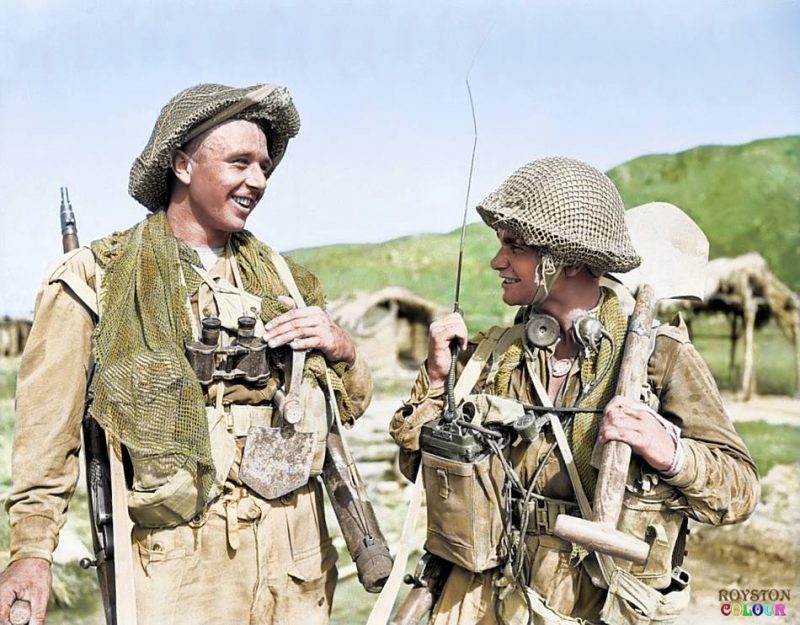
Derrick Deamer having joined the Army as a volunteer in 1942, he was part of the Normandy landings in the Second World War. He then served as a guard at Buckingham Palace before his Middlesex Regiment was sent into Korea on August 25, 1950.
In November 1950 Sgt. Deamer was injured when a piece of shrapnel hit him in the foot. But after three weeks in Seoul Military Hospital he was back fighting, and stayed in Korea until the summer of 1951. ((www.bedfordtoday.co.uk/))
“We all got a lifetime of experiences we could never forget. It’s something I would never wish anyone to experience.”
(He was still alive in 2008, aged 82)
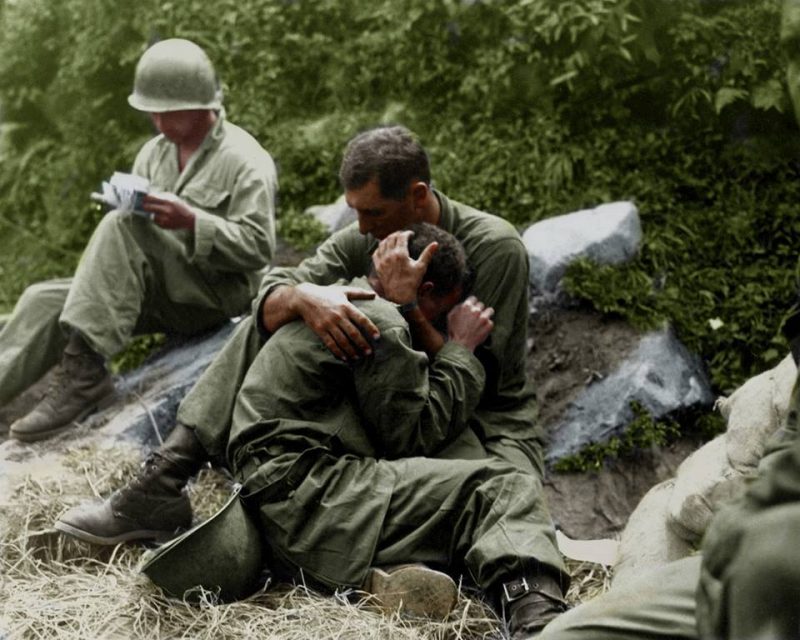
Photographer – Sfc. Al Chang. (Army)
(Colorized by Jared Enos from the USA)
https://www.facebook.com/JenosColor
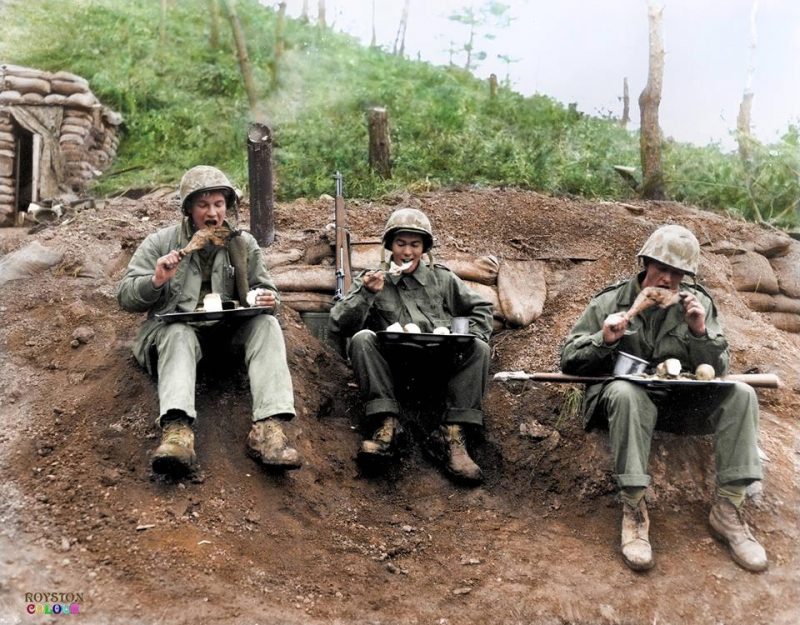
(Official Marine Corps Photo)
(Colourised by Royston Leonard from the UK)
https://www.facebook.com/pages/Colourized-pictures-of-the-world-wars-and-other-periods-in-time/182158581977012
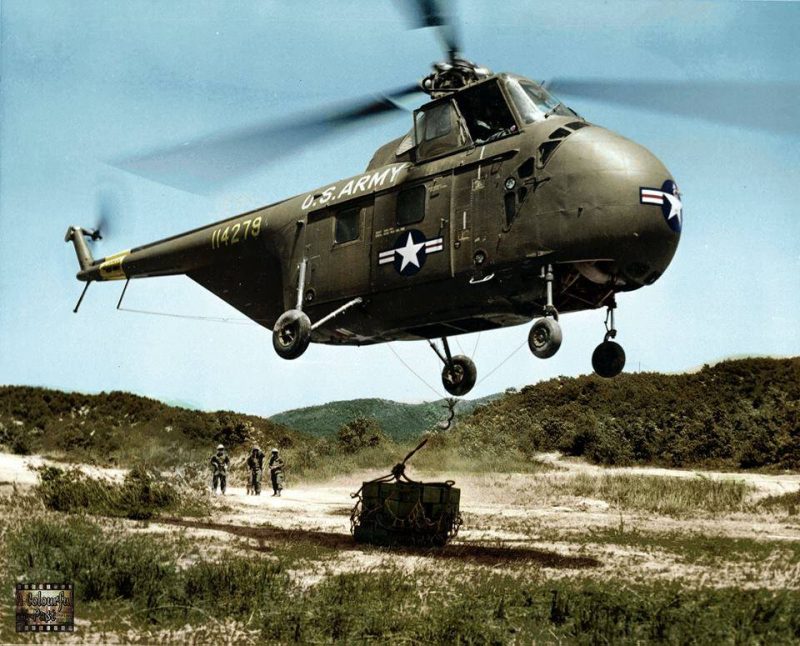
(Colourised by Allan White from Australia) https://www.facebook.com/AColourfulPastRevisited/
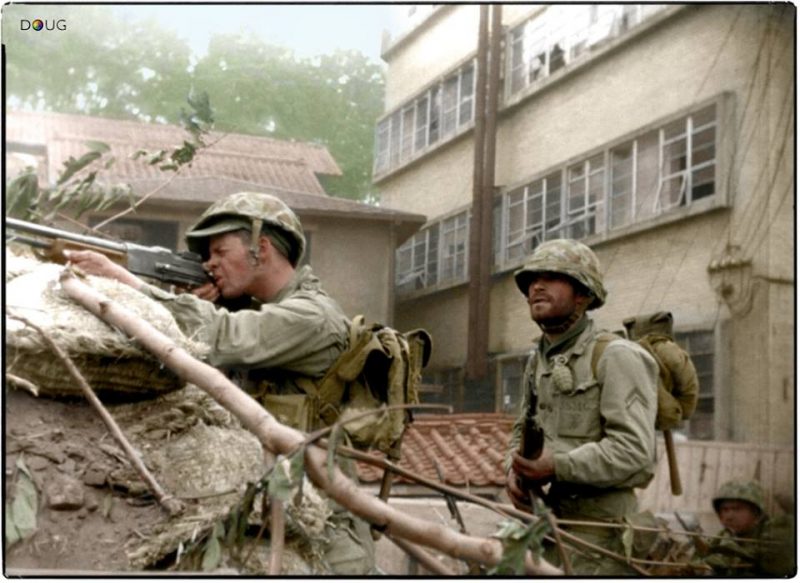
Photographer – Lt. Strickland
(Source – NARA FILE#: 111-SC-351391)
(Colourised by Doug)
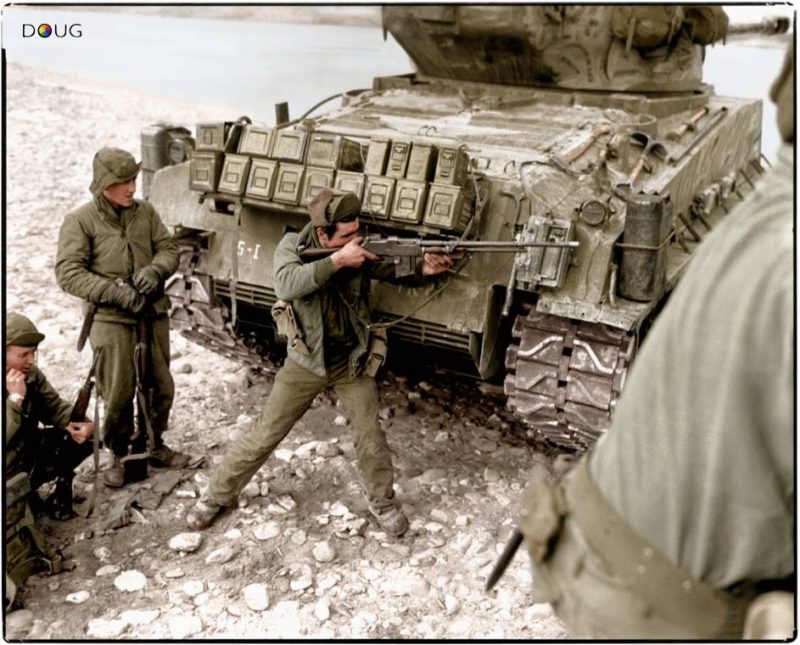
(Source – NARA FILE#: 111-SC-358782)
(Colorised by Doug)
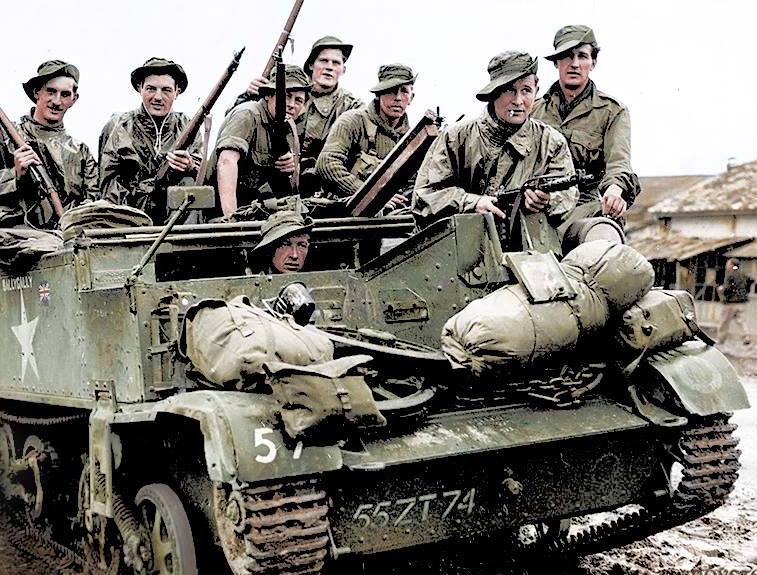
1951 – The Battle of Imjin River
About 400 “Glorious Glosters” fought a last stand on Hill 235, which was later renamed Gloster Hill, they held out against 10,000 Chinese troops for three nights during the battle in April 1951.
They had started the Battle of Imjin River with 700 men but few avoided death or imprisonment.
Fifty-nine were killed and nearly 600 were taken prisoner. Thirty-four died in captivity.
Prisoners remained in POW camps for more than two years until after the armistice was declared in July 1953.
It remains the bloodiest battle fought by British Forces since World War II.
(Colourised by Royston Leonard from the UK)
https://www.facebook.com/pages/Colourized-pictures-of-the-world-wars-and-other-periods-in-time/182158581977012
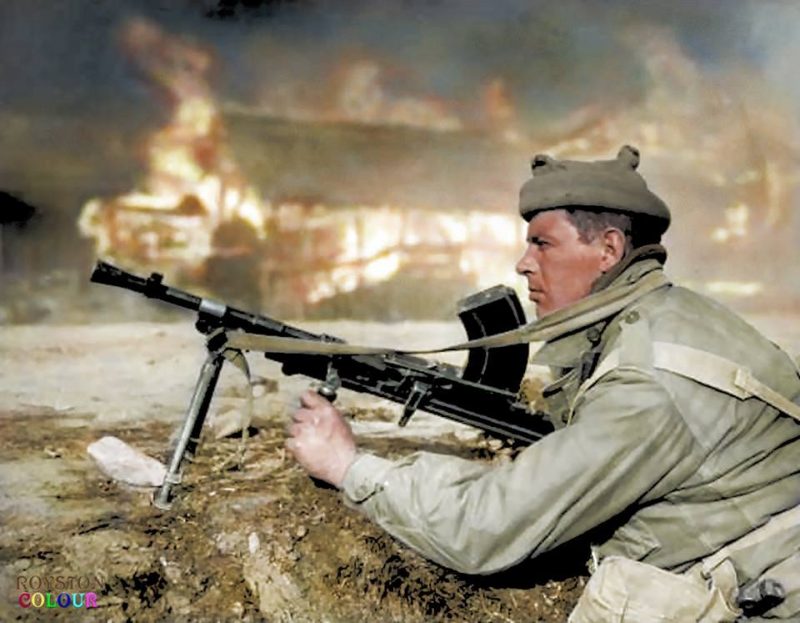
“The 1st Battalion led the advance on the 28th (Oct.) with its leading platoon mounted on tanks. The main opposition came from tanks, and this imposed long delays on the column, although the air gave all support that could be desired, frequently spotting and destroying tanks in the path of the Battalion. These delays made it impossible to reach Chongju in daylight, and the Battalion halted for the night about a mile away, and it was fortunate it did so as there turned out to be a strongly held and well-sited position defending the town. The following day 3rd Battalion, Royal Australian Regiment (3 RAR) encountered stubborn resistance, which took the greater part of the day to overcome, but by the evening all was set for the entry to Chongju, which was to take place the following morning, 30th October”. (argylls1945to1971.co.uk)
(Colourised by Royston Leonard from the UK)
https://www.facebook.com/pages/Colourized-pictures-of-the-world-wars-and-other-periods-in-time/182158581977012
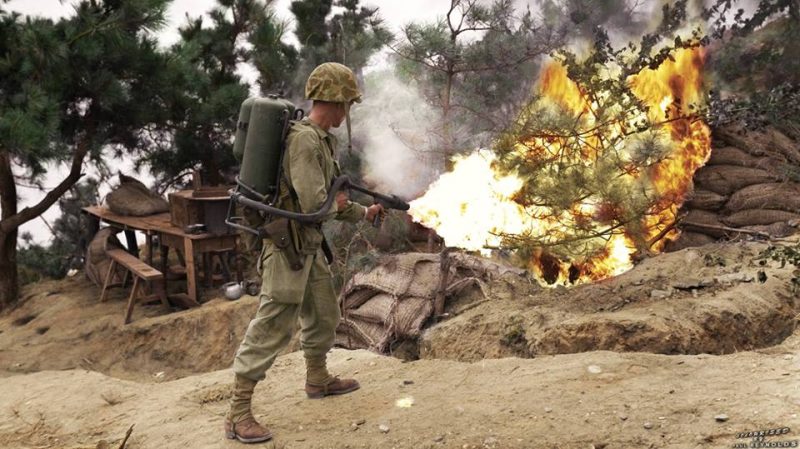
North Korean gunpit, Wolmi-do island, Inchon. 15 September 1950.
This sandbagged gun pit was dug into rear of a slit trench. Table, bench and other items show how completely the sudden bombardment and assault came, for the defenders.
This 351′ peak dominated the other major assault beaches, Red Beach to the North and Blue Beach to the South, which was why the capture of Wolmi-Do was the key to the entire Inchon invasion.
3/5’s assault companies G and H, landed by LCVPs from the APDs (Attack Transports), quickly overwhelmed most of the North Korean defenders. But not all. Once the remnants partly recovered, they showered grenades down on I Company, 3/5’s reserves, who came in the 3rd Wave and were mopping up in support.
Unfortunately for the NK, Comstock (LSD 19) and Fort Marion (LSD 22) had also landed 6-M26 tanks and this flame thrower team, and they killed all NK who would not clearly surrender.
On this day Wolmi-do, with its 200-yard “beach” of sand and rocks, its low-revetment and supporting ridge, its dominating peak and stubborn defenders fell. Seoul was 25 miles further inland. Ten bloody days of fighting remained before MacArthur would claim the capitol as again free. Seoul changed hands two times again during the next several months.
The M2-2 Flame thrower had a fuel capacity of 4 gallons and weighed approximately 70 pounds, fully loaded. The resultant stream of liquid flame could carry over 50 yards.
The napalm-gasoline fuel was propelled by a gas system of pressurized nitrogen, flow rate controlled by the rear hand grip. Leaving the nozzle the fuel was spark-lit by a battery-powered pyrotechnic ignition system controlled by the trigger in the front hand grip. (koreanwaronline.com)
“After we got to Korea, I was a bazooka gunner (like a rocket launcher — knocks out tanks) and a flamer-thrower operator.” “They picked the littlest guy to carry the meanest weapons because they’re harder to hit, they make a smaller target. Your life expectancy for a flame-thrower operator was two minutes!” I asked if he knew that fact. He chuckled, “Nooo…not ‘til after I got hit! That’s a very dangerous position. That’s where I got hit – the first time in Inchon, I was carrying a flame-thrower. I didn’t use the bazooka over there at all, it was mainly the flame-thrower.”
I asked if he chose to be a flame-thrower, he emphatically replied, “Hell no I didn’t! You don’t have a say-so. Unless you refuse – then you’ll be court-martialed. When I first got hit, I was hit in my left leg! It was very painful and it knocked me down, and when I got up, I felt something running down my leg, I wasn’t sure if it was urine or blood. Low and behold it was blood.
They got me aboard a ship and got me all patched up in September 1950. I was on the ship about week and a half when the ship went up to Won Son, up the Yalu River. By then winter set it, and by the time we got to where we wanted to go, the temperature was 20 to 30 below. That’s when I got hit again! It was around the first of December. That was a bad hit — that’s the one that knocked out two inches from my leg — and it was the same leg!”
I was curious how it knocked out two inches from his leg. He explained, “I was hit by three machine gun bullets. The bottom bone and top bone of my leg were pulled together to mend — they were going to let it mend, grow back, break it again and put a metal plate in it — but by then I was in a Navy hospital in Great Lakes, Illinois. I was in a body cast for 10 months. It was ‘terrible! I was 20 years old and had nothing to do but read books. It was a spica cast that went from my waste all the way down my left leg and halfway down my right leg. I finally got to come home after 30 days, and then I was discharged.”
For both of his injuries that my father endured during the war, he received two separate purple hearts.
(By courtesy of his Korean adopted daughter MeeSun Boice)
Dwayne L. Boice, 81, of Kansas City, Kansas passed away February 22, 2012.
Colourised by Paul Reynolds.
https://www.facebook.com/PhotoColourisation?ref=hl
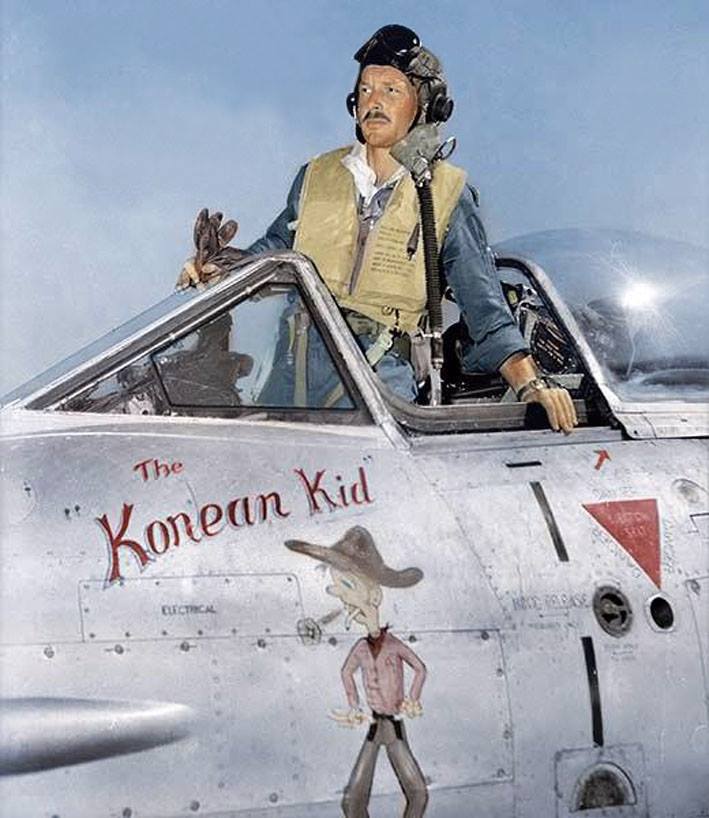
Australian Pilot Officer Randall (Randy) Green, a former member of No. 23 (City of Brisbane) Squadron RAAF prepares for a mission against targets in North Korea with No 77 Squadron RAAF.
The nose art on his aircraft reads “the Korean Kid’.
This Meteor, A77-316, was normally flown by Sergeant James C Kichenside, who served in Kimpo, Korea, from March until September 1952, completing 148 operational missions.
Sgt Kichenside was the youngest pilot in the squadron and was known as ‘the Korean Kid’. The ground crew of 77 Squadron decided to organise the painting of the logo on A77-316, after which a brief handing-over ceremony was held to ‘present’ the aircraft to Sgt Kichenside. It was standard practice that after a period of consolidation, and, whenever practical, a pilot could sign for and fly the same aircraft consistently.
He flew many missions in this aircraft until its last flight on 27 August 1952, when a mix-up meant he flew A77-258.
Aircraft A77-316 was piloted by Flying Officer Oelof M. Bergh RAF, an officer flying with 77 Squadron as part of an RAF exchange program to bolster the depleted numbers of operationally trained pilots. On this occasion the aircraft A77-316 was hit by ground fire, F/O Bergh ejected safely but spent the remainder of the conflict as a prisoner of war.
“Stories of Oelof are legion. He was one of the few RAF pilots who was chosen to fly in the Commonwealth Squadron in Korea.
He spent 18 months in the hands of the North Koreans who tried to break him. He spent most of his time up to his neck in freezing water in a pit. Oelof would always make light of this, although I believe he never fully recovered from the experience. He said that the North Koreans unusually sent him back before the end of the war as they couldn’t put up with the hard time he was giving them!”
(Wing Commander Mick A F Ryan – Retd)
Oelof M. Bergh died 15th May 1983, aged just 58
Randall Green died 16th September 2008
Squadron Leader James C. Kichenside, RAAF, whilst commanding the Antarctic Flight at Mawson Station in 1960, had a glacier named after him.
(Source – Australian War Memorial collection JK0351)
(Colorized by Tom Thounaojam from India)
https://www.facebook.com/pages/Coloring-Past/631167093560788
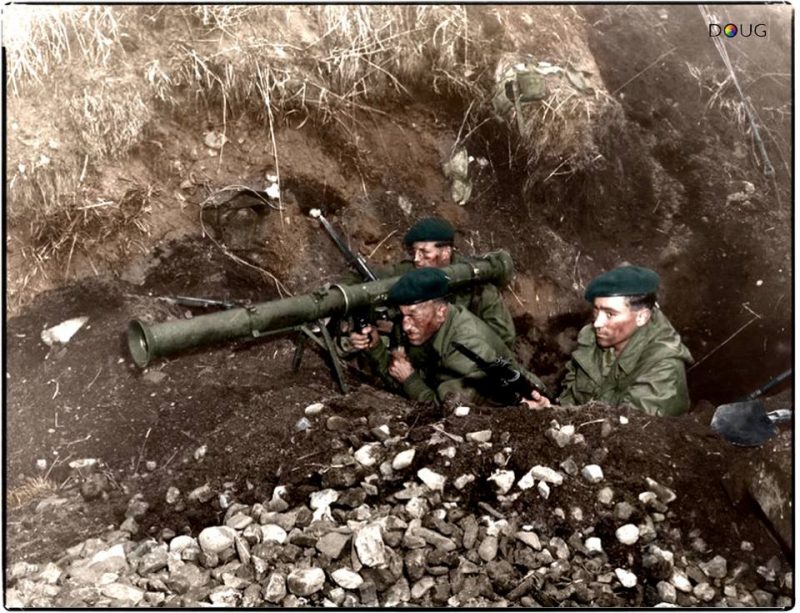
On 10 November 1950, 41 (Independent) Commando joined the United Nations advance in North Korea where they served with the United States Marine Corps; the second time the two organisations had served together, the first being the Boxer Rebellion. During the Battle of Chosin Reservoir Lt. Col. Drysdale was given command of a 900 man unit of his own Commando, American, and South Korean forces called Task Force Drysdale.
Their hard fighting together with the American Marines and Army led to 41 Independent Commando being awarded the American Presidential Unit Citation that the 1st Marine Division earned.
The Commando reformed in Japan and in April 1951 were assigned to what eventually became the 1st Commonwealth Division. They raided the North Korean coast with the Republic of Korea Marine Corps until 41 Commando returned to England in December 1951.
(Colourised by Doug)
https://www.facebook.com/ColouriseHistory?fref=nf
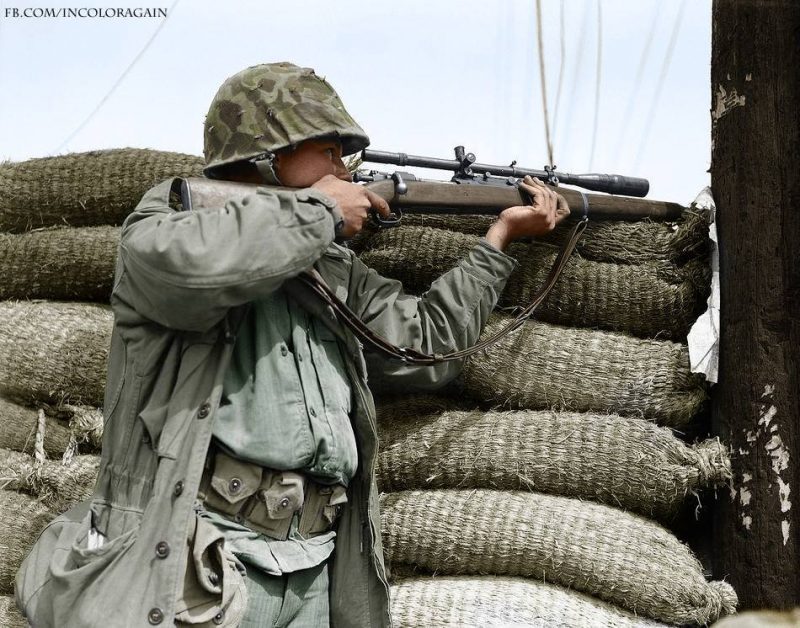
(Colorized by Noah Werner Winslow from the USA)
https://www.facebook.com/incoloragain